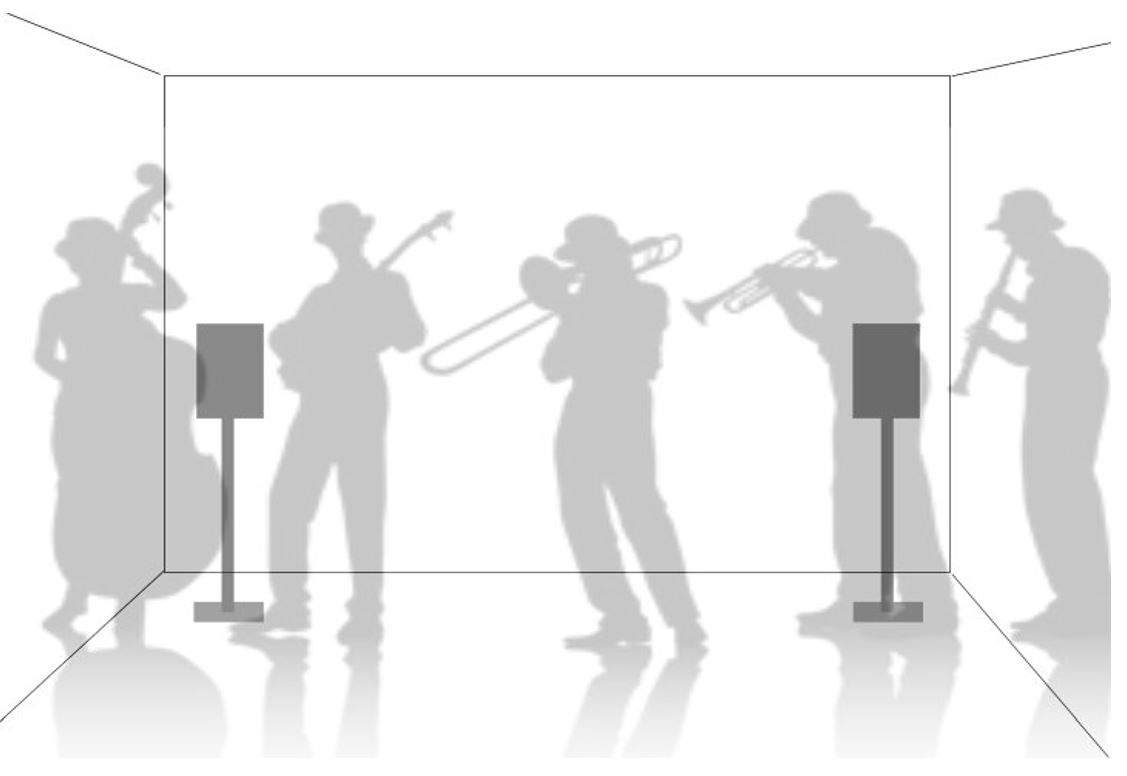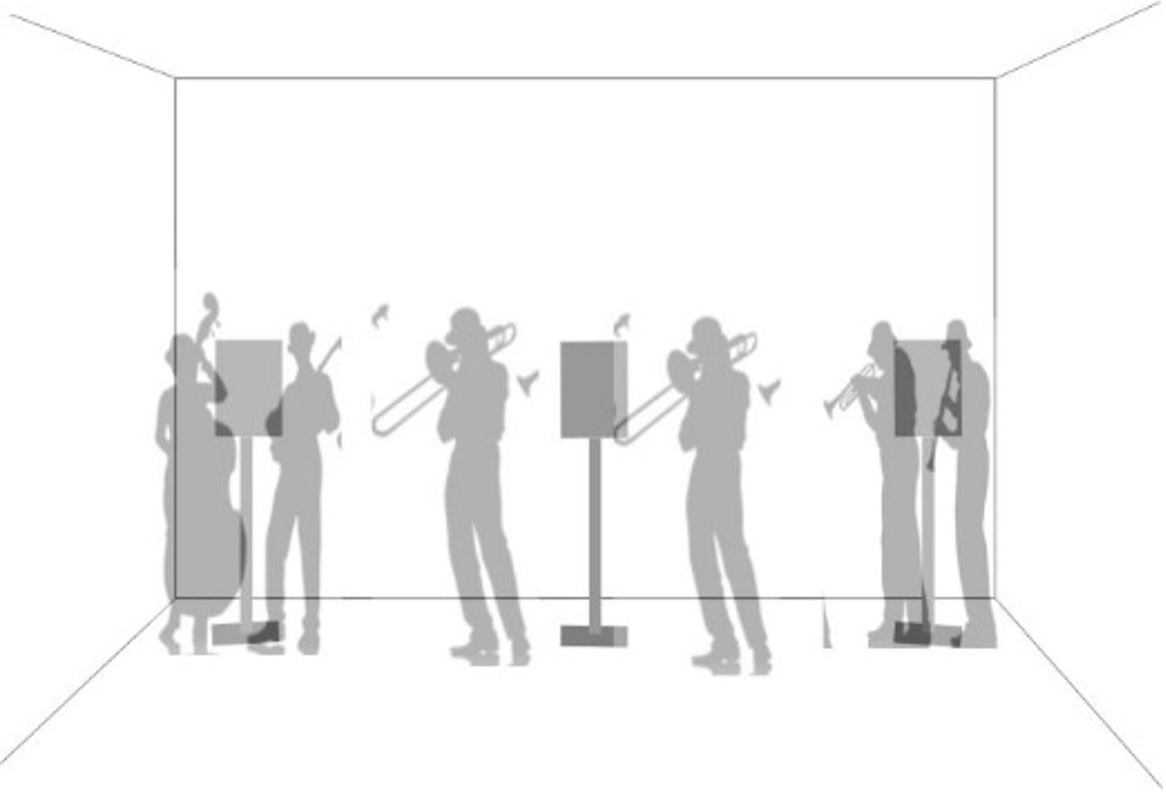- The ability to precisely locate each reproduced sonic cue or image in a three-dimensional space is defined as acoustical focus. Recordings contain many such images superimposed side to side and front to back in every direction for 360 degrees around the listener
- A system is said to have pin-point focus if from the perspective of the listener, each of these images is properly sized, precisely located, and not wandering
- Also called Stereo Imaging
Recordings Affect Focus
We should understand how a recording or recording technique can change what focus means visually. A microphone placed near a vocalist or instrument can make its sonic image appear larger in the soundstage. A more distant mic renders the sonic image to be more of a point in space. Using your human experiences, it’s not hard to hear the difference and thus what was intended. In a musical recording or movie, the layering of many focused sounds creates the suspension of disbelief. The key, is it correct spatially in our system? Are all the sounds in the right place? This is a more difficult determination when listening to images placed outside the front soundstage, over, beside, or behind the listener. While its coming, there are no definitive tests to know if a bee is flying the correct path around us in our room. We must rely on our knowledge of reference recordings heard in our reference system for that. This points to the importance of following the acoustical framework to assure the correct immersive focus.
Poor Focus is caused by
- Direct sound is diminished or blocked
- Excessive reverberant sound level (RT)
- Improperly crafted front soundstage
- Speaker position
- Side wall acoustics
- Seats placed outside the sweet triangle
- Frequency response distortions






